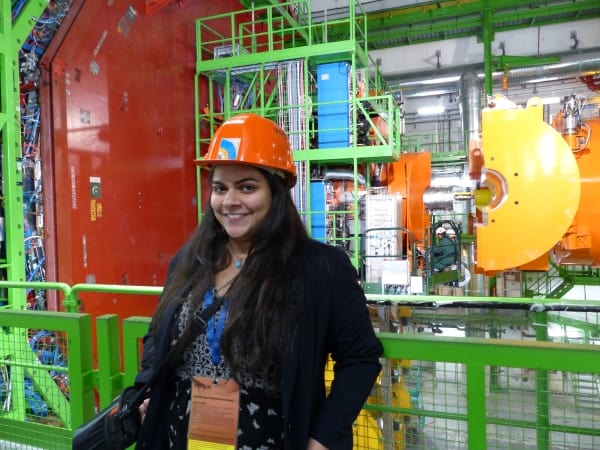
By Tushna Commissariat at CERN
Regular readers of Physics World will know that I am currently visiting the CERN particle physics lab in Geneva, ahead of the restart of the Large Hadron Collider (LHC) in the coming weeks. My first stop yesterday afternoon was a press conference in which CERN’s director-general Rolf Heuer and other leading physicists briefed us about “Run 2” and what researchers are hoping to discover. You can read about what they had to say here: “Large Hadron Collider fires up in a bid to overturn the Standard Model“.
I managed to squeeze in a quick last-minute visit to the Compact Muon Solenoid (CMS) detector before it is sealed up tight for the next three years. My host was CMS communications officer Achintya Rao, who took me and a few others deep underground into the bowels of the CMS – and what a sight it was!
While most of the detector is already covered up, we did see a few engineers hard at work making final fixes to the device before it comes to life over the coming months.

Rao pointed out that unlike the LHC’s largest detector ATLAS, the CMS was built entirely above ground and then lowered in 13 segments into its underground lair. Indeed, we could peer into the open maw of the CMS cavern from above and below because the giant concrete block that usually covers it was still open. Unfortunately, the passageway from the CMS to the LHC tunnel was already sealed shut, but I did get to see the beamline where it entered the CMS detector.

I am really pleased that I got to visit the detector this time around. The next time I set eyes on it will be in three years, hopefully after the device has revealed yet more mysteries of the universe, making it an even more interesting site.



